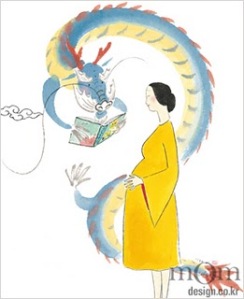Cognitive science & “Mysticism”
For this blog, I chose the topic “cognitive science” as the best way to think about “mysticism”. For the other ideas, especially raised from the power relation perspective e.g., Orientalism, Feminism, resistance, politics, I already wrote about those topics and while they are interesting, I am more excited by the concept of mysticism and cognitive science.
www.psych.utah.edu/…/psy3120_2008F.html
In my first journal entry, I discussed mystical experiences as being comparable since all mystical experiences have the same goal – peace. Specifically, mystical or religious experiences are governed or generated by the universal force, e.g., creator, but with different interpretations which are outlined by religion or culture. Mystical experiences are presented as various forms of experiences, that are referred to as the “perennial approach” towards mysticism.
However, for this journal entry (III), I will take a social constructive view to discuss mysticism, and this does not mean that I deny the arguments I have made in the first journal. If the first and second blogs are based on a third person point of view towards mystical experiences, the third blog will be based on the experiencer’s point of view of his or her own mystical experiences. For this blog, I will argue that mysticism can be thought of in terms of cognitive science while referring to the social constructivist view of knowledge and its effect how phenomena are interpreted.
Cognitive science is an interdisciplinary study of perception and intelligence, embracing philosophy, psychology, artificial intelligence, neuroscience, linguistics, and anthropology (Standford Encyclopedia of Philosophy)[1]. As cognitive science is a broad concept, I will focus on one branch called “cognitive psychology” to comment on mystical experiences.
Paul Thagard, a professor of Philosophy, Psychology, and Computer Science at the University of Waterloo, explains that “cognitive” psychology is deeply related to the “social context of knowledge” (2005, p. 205). Thagard’s argument emphasizes the importance of an individual’s knowledge and the culture of the individual when the individual evaluates phenomena.
How is an individual’s experience interpreted as mystical or religious? Who judges whether the individual’s experience is mystical or not? I argue that the answer would be us or ourself. We experience things and we judge things according to our knowledge of ourselves and our culture. A third party interpreting our experiences is of less importance because that view is separate from the original expeirence.
Then how is our knowledge related to the social context? Thagard defines “knowledge” as a “social enterprise” (p. 205) and he also states that “the social context of knowledge” is deeply related to an individual’s psychological dimension and how religious phenema are interpreted. Based on this premise, knowledge can be said to be socially constructed and that knowledge and its interpretation of phenemenon varies in different social contexts.
At this point, we can pose two questions: 1) Can the same mystical experience be seen differently in different time periods?; 2) Can one individual’s mystical experience be seen as a “non-mystical” experience by another individual? The first question can be answered by using one of the discoveries in mathematics called “complex numbers”.
In the history of mathematics, complex numbers, e.g., 1 + 2i where i is an imaginary number, were once treated as being “mystical” (Baigrie, 2002, p. 152) due to its imaginary element “i”. However, these complex numbers gained legitimacy after two centuries. The shift or the gap in position of complex numbers shows the change in terms of epistemology[2]. As Thagard points out, according to “social contexts of knowledge” or epistemology in different times, complex numbers experienced a shift of being “mystical” to “non-mystical” or real. This mathematical concept shows that the same experience can be interpreted differently according to different epistemologies. This means, as well, that religious experiences can be interpreted differently based both on the individual’s perceptions and his or her culture. 
Let’s consider the second question: can one individual’s mystical experience be seen as a “non-mystical” experience by another individual? This question can be partially answered by comparing different views of mysticism by differnet cultures.
Within Christian society, activities such as tongue-speaking and communion with God, are in fact not considered mystical experiences, but rather as true experiences, but from other religions’ perspectives, these Christian experiences are seen as mystical in their psychological dimension, more specially their knowledge that they are culturally created.
Another comparison can be made between Korea and other societies’ view of mystical experiences. Outside Korean society, Koreans’ predict the conception and a baby’s sex by having a dream which is seen as being a mystical experience from the perspective of observors outside Korea. However, within Korea this is seen as an everyday experience.
Thus, based on the premise that knowledge is socially dependent, cognitive science or cognitive psychology can show how an individual interprets his or her own mystical or religious experience depends on both their culture and whether they are observing or experience a mystical expeirence.
[1] http://plato.stanford.edu/entries/cognitive-science/ Accessed on April 1, 2010
[2] i.e., the branch of philosophy concerned with people’s mind and reasoning.
References
Baigrie, Brian S. History of Modern Science and Mathematics. New York: Charles Scribner’s Sons, 2002.
Thagard, Paul. Mind: Introduction to cognitive science. 2nd ed, Massachusetts Institute of Technology, 2005.






